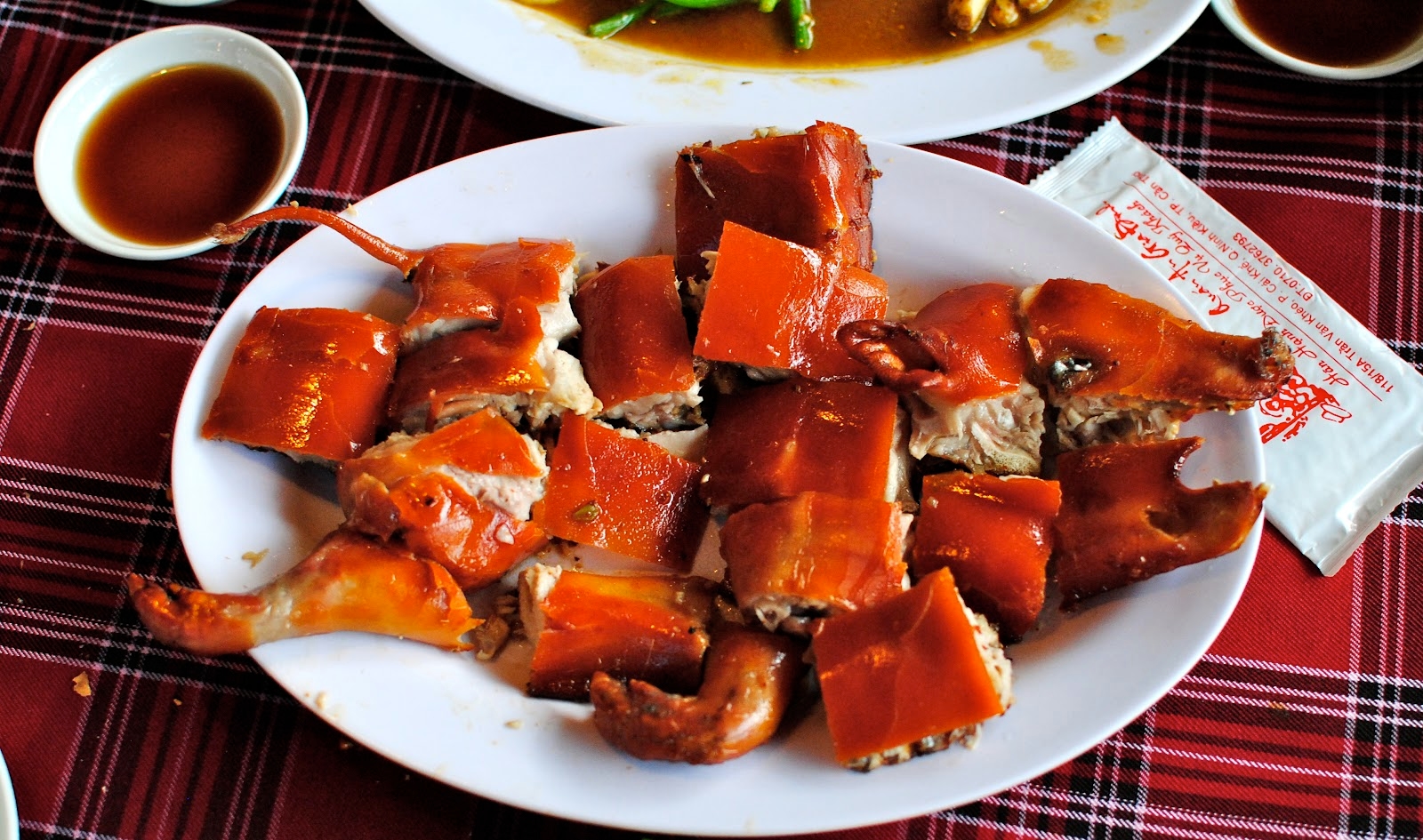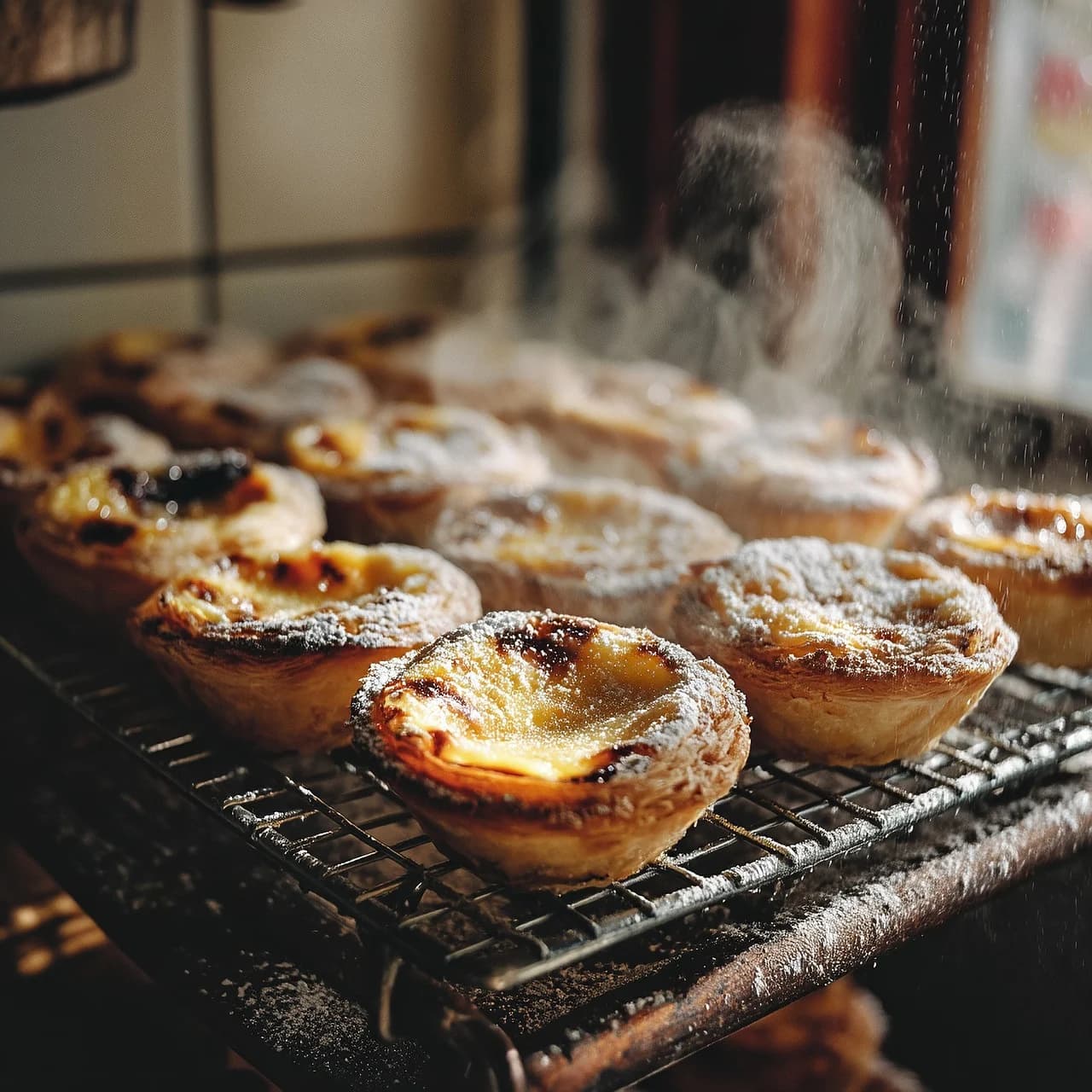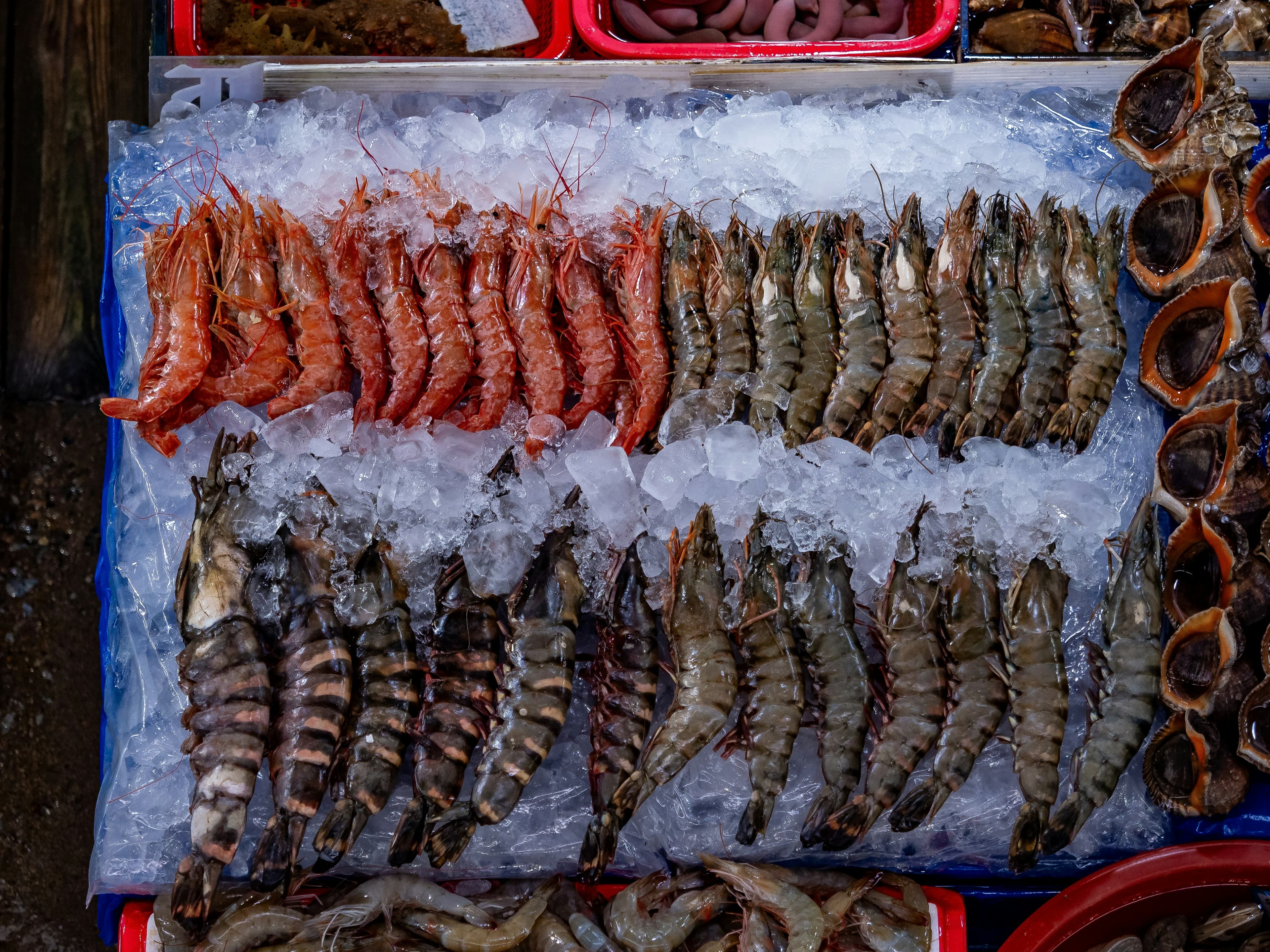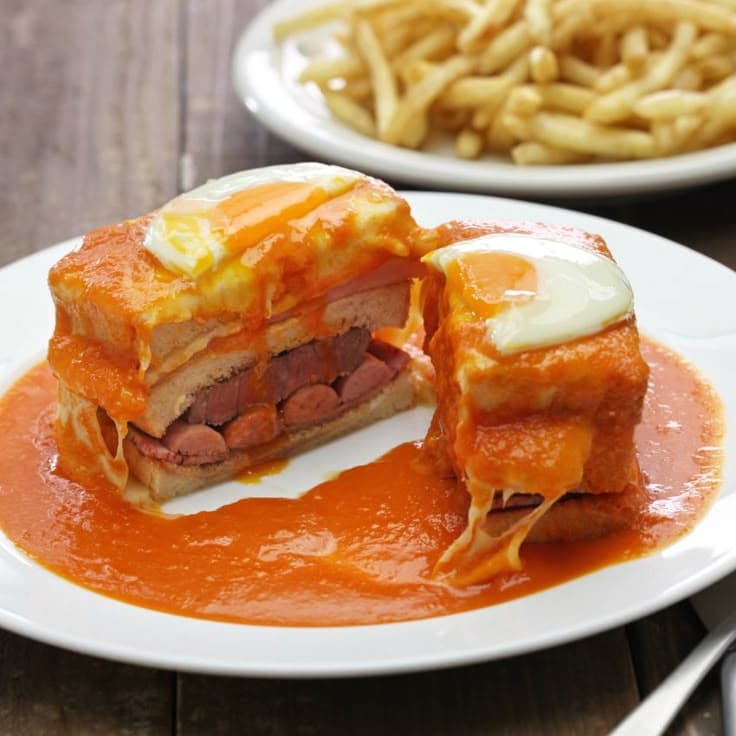
In the center of Portugal, more precisely between Coimbra and Aveiro, there’s an area where people speak seriously about three things : sparkling wine, bread… and roast suckling pig ! Welcome to the Bairrada region, where leitão assado (literally “roast suckling pig”) isn’t just a Sunday dish. It’s a banner, an identity, a perfectly valid reason to drive 200km just for lunch ! (yes yes, really !) It’s also one of the country’s most emblematic gastronomic treasures, so much so that it now has an Indicação Geográfica Protegida, that is to say a protected geographical indication, which officially recognizes that the “real” leitão da Bairrada comes from here, not elsewhere (a bit like Champagne).
And honestly : once you’ve tasted it, you quickly understand why the people of Mealhada (one of the self-proclaimed capitals of leitão) defend their suckling pig as others would defend a grand cru.
A pig not quite like the others
First, let’s be clear : we’re not talking about a regular roast pork (if you’re vegan or vegetarian, we suggest checking out our other articles about beaches instead (there are some great spots in Portugal !) As I was saying… we’re talking about a piglet, fed exclusively on its mother’s milk, slaughtered very young (generally between 4 and 6 weeks), which means the meat is extremely tender and delicate. The keyword here is “young”, that’s what gives it that melt-in-your-mouth texture and subtle flavor that has nothing to do with supermarket roast pork.
Then comes the preparation. And here, we leave behind the simple “pop it in the oven and wait”. Leitão da Bairrada is a coded ritual, passed down like a family secret. The piglet is first cleaned, partially deboned, then generously rubbed inside with a simple yet brutally effective mix : salt, pepper, crushed garlic, lard. Sometimes a bit of piri-piri depending on the house, but the base is intentionally simple. No need to over-season, the goal isn’t to hide the meat : it’s the star.
Then it’s sewn back up. Yes, literally. The piglet is closed, stitched, skewered on a long metal or wooden spit, and placed to roast in a traditional wood-fired oven. And that’s where the magic happens !
The fire, the oven, the gesture
The wood-fired oven is the soul of leitão… There is no leitão da Bairrada without a wood-fired oven, period. That’s not just a saying, it’s practically a moral rule in the region. The roasters traditionally use vine or oak wood, which gives a dry, fragrant heat. You don’t just stack the wood any old way, you don’t “eyeball” the cooking. We’re talking about the art of fire, bordering on science (yes, it’s serious business !)
During the cooking, which lasts on average between one and two hours depending on the piglet’s weight and the oven temperature, the pig isn’t left alone. The skin is regularly basted with melted lard to nourish the rind and help it become crispy, shiny, almost lacquered. The final goal is clear : to obtain that ultra-thin, golden, crackling skin, almost fragile to the bite, which the Portuguese sometimes call “pele estaladiça”, literally “a skin that cracks”.
And that crunch, that’s everything. It’s THE signature ! It’s what makes you close your eyes at the first bite and mumble something unintelligible.
The moment of truth : the carving
Leitão is served hot, freshly out of the oven. It’s not left waiting, maybe just long enough to be placed on the tray, the plates set out, and off it goes. No fuss : it’s cut into rather small pieces, with a good knife or sometimes even heavy kitchen scissors, to keep each bite made of two things at once, the tender meat underneath and the crispy skin on top.
Traditional serving ? On large oval metal or ceramic dishes, placed in the middle of the table, it’s a communal dish. You don’t order “my plate of leitão”, you order “a leitão for all of us”, and then you share. In fact, most restaurants specialized in Bairrada often display the price per kilo of roasted meat. Atmosphere : no kidding around here !
The sides that matter (and those that are mandatory)
Careful, we’re talking tradition. You don’t serve leitão with frozen fries and a random green salad – this isn’t a kid’s menu. It’s served with : white rice, sometimes slightly greasy, cooked with the roast juices ; roasted potatoes, golden in the pig’s fat ; bread from Mealhada, that famous regional bread with a well-baked crust, often served with leitão.
Historically, the bread was baked in the same oven as the pig, which gave it a firm crust, a slightly smoky taste, and a dense crumb perfect for soaking up the juices. Today, pão da Mealhada remains one of leitão’s “official” companions and is even part of the “4 Wonders of the Mealhada Table”, a brand created by the town to protect its emblematic local products (when I tell you they’re proud of it, I’m not lying !)
And of course, the wine. Here, it’s (often) sparkling wine from Bairrada, a local espumante. Why bubbles ? Because the fattiness of leitão calls for the acidity and freshness of the wine. It’s perfectly logical once you’ve tried it. Heavy tannic reds aren’t always the best match. The dry, lively sparkling wine cuts through the fat and resets the palate. Result : you can keep eating. And eating. And just one more little piece, go on.
A festive dish (but not only)
For a long time, leitão assado da Bairrada was the dish for big occasions : weddings, baptisms, communions, family victories more or less official (“he finally got his diploma, let’s serve the pig !”). You’d order the whole animal, twenty people would eat around the table, and everyone left with a little aluminum packet “for later”.
Today, it’s entered another dimension. It’s become a gastronomic destination. People hop in the car on Saturdays just to “go eat leitão in Mealhada”, like you’d go eat oysters by the sea. Specialized restaurants line the famous national road that crosses the area ; some display the phrase “Leitão da Bairrada, forno a lenha” in huge letters on their façades, like a rallying flag. And honestly, it’s not empty marketing : the food really is that good. There’s a kind of carnivorous pilgrimage vibe along that road (yes, go ahead and note that down, it’ll be useful someday, surely).

The sandwich that makes holiday returns dangerous
Let’s talk about a serious subject : the sandes de leitão. It’s probably one of the best sandwiches in Portugal (I’m completely objective of course), and clearly one of the most dangerous if you were planning to “eat light on the road” !
Imagine crunchy bread (usually that typical Mealhada bread, with a firm crust), stuffed with pieces of still-warm leitão, crispy skin included, and drizzled with a slightly spicy juice made from melted fat and piri-piri. It’s greasy, salty, crispy, hot, absolutely delicious. That sandwich is practically a heritage piece on its own, to the point that it’s become a must-stop on the way back from a weekend : many drivers on the A1 (the Lisbon–Porto highway) make a detour to Mealhada just for that. We’re no longer talking about lunch, we’re talking about moral refueling.
A protected pride
Leitão da Bairrada is now protected by a geographical indication, meaning it’s not just “roast pork” you can make anywhere and call the same. To earn that name, you have to respect the origin, the animal’s diet, the preparation methods, and the wood-fired oven cooking. In short, it’s serious business !
Why this protection ? Because when a product becomes iconic, it attracts imitations. And for Bairrada, leitão isn’t just a dish on a tourist menu. It’s a local economic pillar, a tourist attraction, and for many families, a generational story. Some houses have been roasting leitão for generations. You can still find family-run spots where it’s the grandfather at the oven, the daughter carving, the son serving in the dining room.
It’s also a product that brings together other regional traditions : Bairrada’s sparkling wine, Mealhada’s bread, homemade pickles sometimes served on the side, and that very Portuguese way of turning a meal into an entire afternoon. You don’t order leitão to “eat quickly”. You sit down, take your time. It’s a moment.
How to taste it (the right way)
If you want to experience leitão in its true local form, here are a few practical tips.
Go early or book ! The well-known spots in Mealhada, Aguim, Anadia or Pampilhosa do Botão fill up fast on weekends. It’s not unusual for everything to be gone by 3 p.m. on Sunday.
Don’t play shy. Say clearly that you came for the leitão, no need to flip through 12 pages of the menu. They’ll suggest a portion based on your group size. Ask for rice, roasted potatoes, local bread. If they offer the house espumante, say yes. You’re here for the full experience.
Forget the idea of “I’ll just have a small piece without the skin”. No. The crispy skin is part of the story. It’s like asking for a pastel de nata without the custard – no, we don’t do that.
Don’t plan anything right after. No ambitious hikes, no “let’s go for a swim right away”. Leitão naturally imposes a slow, almost meditative rhythm. It’s a dish that gently says “how about we sit a little longer ?”
A slice of Portugal on your plate
Leitão da Bairrada is a dish that says a lot about Portugal. It tells of rural life, wood-fired ovens, patience, family. It also tells of the pride of a region that knows exactly what it’s worth and proves it to you in one bite. It’s a raw dish, without unnecessary frills, yet perfectly mastered. No attempt to hide the flavor, no tricks with sweet sauces or fancy glazes. You’re given the meat, the crunch, the juice, the bread, the wine. And they watch you fall in love !
Some countries have a national sweet star (the pastel de nata), others a liquid symbol (Port wine)… Bairrada has its roast suckling pig, ready to be shared. And honestly ? It’s one of the best ways to understand Portugal : sitting around a big table, fingers shiny with fat, a smile on your face, saying “we’ll be back” (and for sure, you will)
Share this article
Suggested articles

Convent Sweets: Delicacies Born in the Monasteries
Portugal wouldn’t be the same without its convent sweets. These golden pastries, rich in egg yolks and scented with cinnamon, tell the story of a country where faith met indulgence. Born in the silence of monasteries between the 15th and 18th centuries, they were once made by monks and nuns, often to support the convent or thank benefactors. Today, they are an essential part of Portuguese culinary heritage.

Pastéis de Nata: History and Secrets of the Recipe
It’s hard to imagine a stay in Portugal without tasting a warm pastel de nata, with its crisp flaky crust and delicately caramelized custard. These small tarts, known as pastéis de Belém when they come from the famous Lisbon pastry shop, have become one of the country’s greatest gastronomic symbols. Their popularity has long surpassed Portugal’s borders: today, you can find them in Paris, London, New York, or Tokyo — but their true authenticity lies in the Lisbon tradition, passed down for more than two centuries.

Seafood in the Algarve, an Oceanic Feast
The Algarve, this southern region of Portugal bathed by the Atlantic, is not only famous for its golden beaches and cliffs sculpted by the sea… It is also a true paradise for seafood lovers ! Prawns, octopus, clams, crabs, fresh sardines, and of course the famous cataplana, every bite tells a story of the sea, local traditions, and culinary expertise.

Pão de Ló
In every Portuguese family, there’s a cake that comes out of the oven like a little sun: the pão de ló. Golden, airy, soft, it always announces something joyful. It’s the cake of dressed-up Sundays, overfilled tables, and aunts who hug you too tightly while saying how much you’ve grown.
.jpg&w=3840&q=75)
Pastéis de Bacalhau
There are dishes that smell like holidays and grandma’s kitchen. Pastéis de bacalhau are exactly that. These little golden cod croquettes, crispy on the outside and soft on the inside, are at once an appetiser, a madeleine of Proust, and proof that Portugal has completely mastered the art of frying.

The Best Francesinhas in Porto : The Complete Guide to Savouring the Portuguese Specialt
Porto, the second largest city in Portugal, is not only famous for its namesake wine and the picturesque landscapes along the Douro… the city is also a true culinary paradise, where tradition meets innovation!


